What does Apple look like without the iPhone?
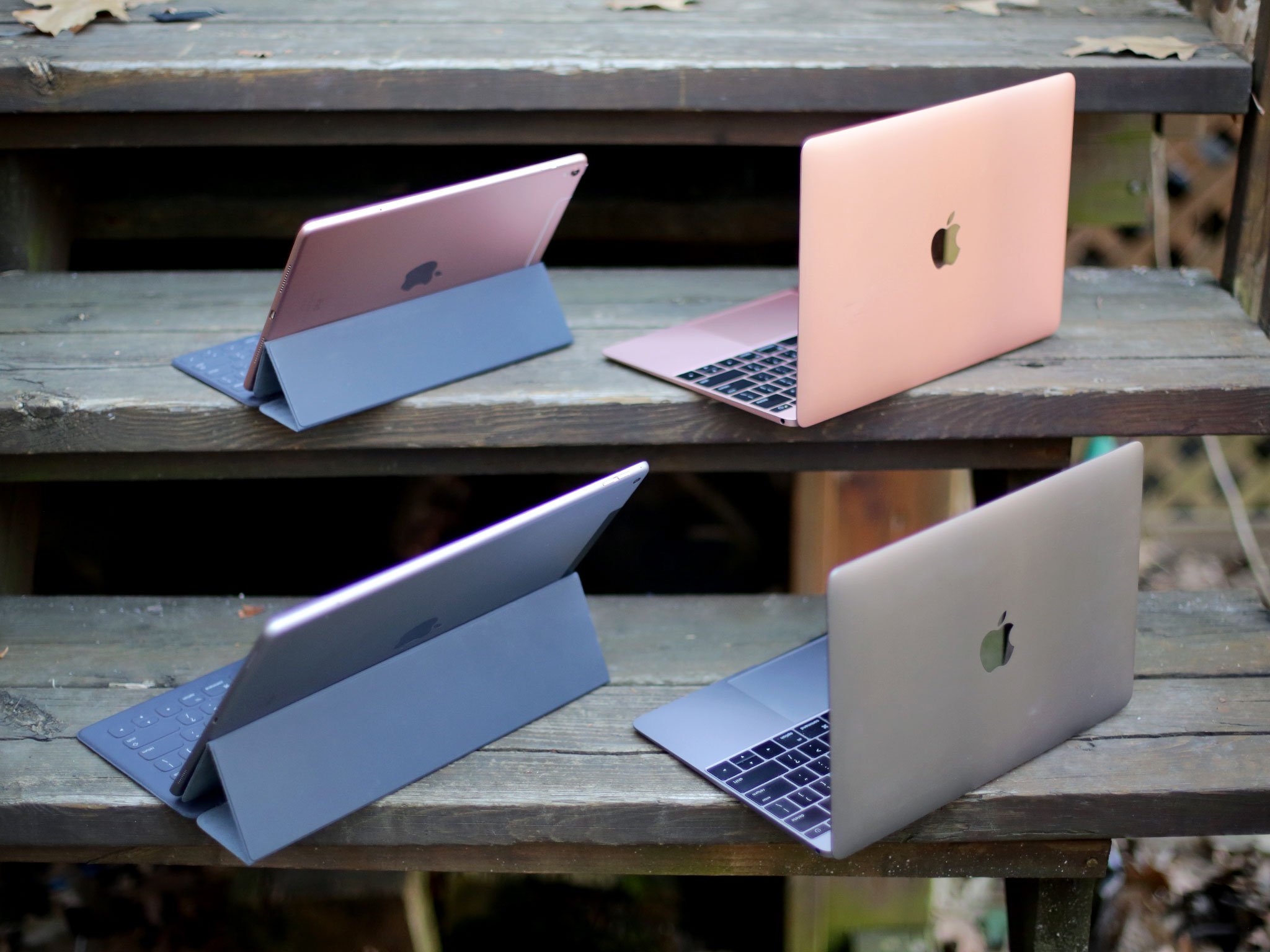
In Garfield Minus Garfield, Dan Walsh removes Garfield from his own comic strip, transforming Jim Davis's strip about a fat cat who hates Mondays into a bizarre story of a man riddled with existential despair. It's amazing what can happen, and how your perspective can shift, when you take the weightiest part of something — sorry, Garfield — out of the equation.
So now imagine Apple without the iPhone.
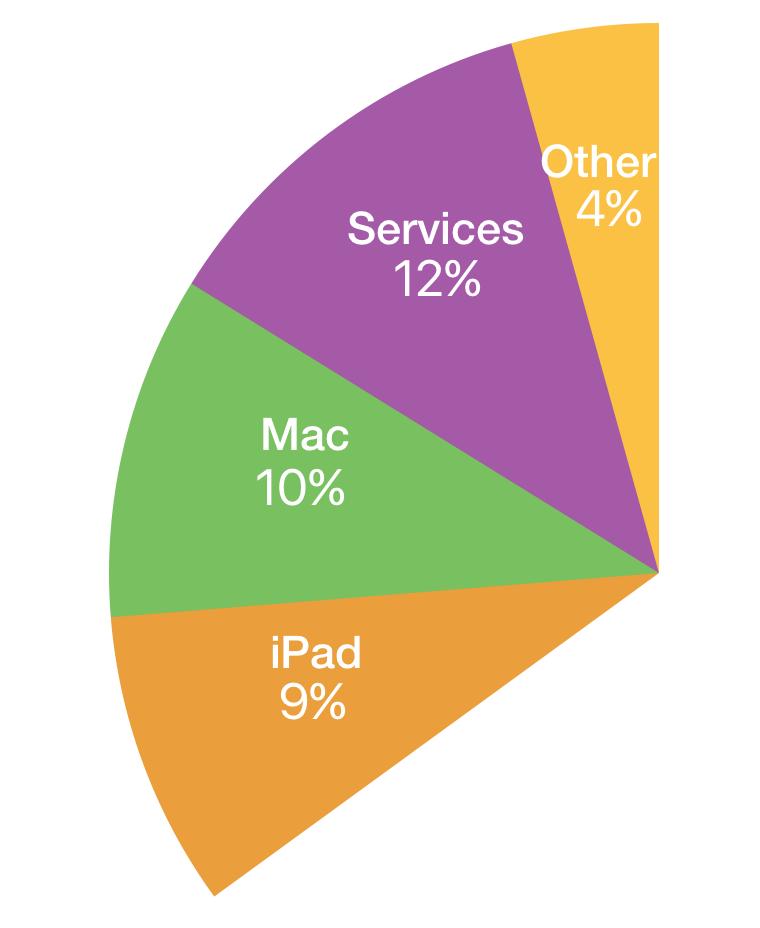
A tough proposition
It's not easy, even if you try. The iPhone dominates Apple's product sales and its balance sheet. And like a star exerting gravitational influence over its planets, many aspects of Apple's business are perturbed by the existence of the iPhone.
Yet the iPhone shines so bright that it sometimes makes it very difficult to see the rest of Apple. As someone who builds charts about Apple's business every three months when the company releases its financial results (which it did this week), I've had to adjust the scale of most of my charts in order to measure the heights of the iPhone. Meanwhile, the Mac and iPad and the rest of Apple's businesses get smaller and smaller — not in real terms, but simply in comparison with the iPhone.
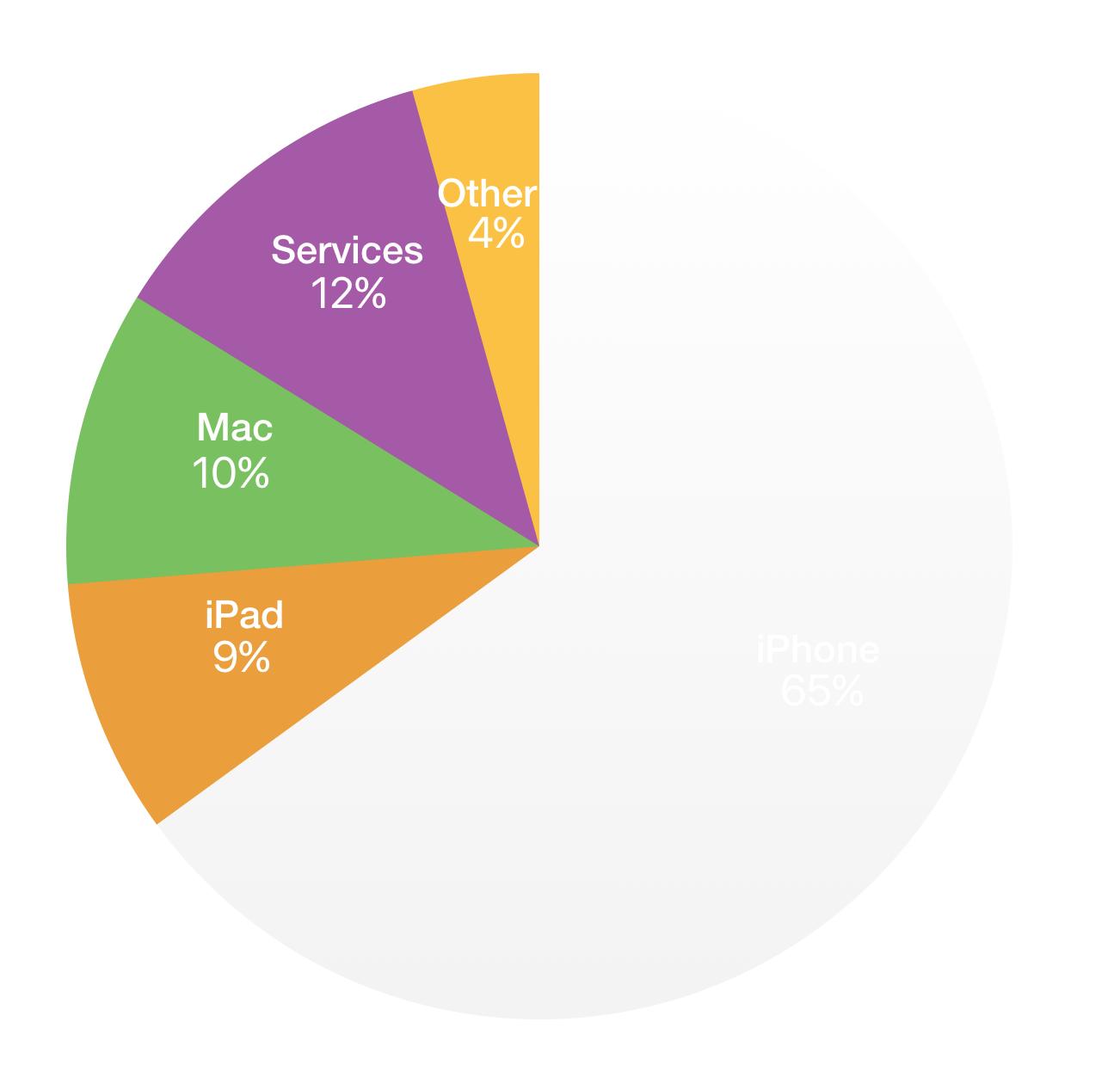
When Apple reports its results, the iPhone stands center stage. When iPhone sales slip, as they did last quarter, the entire company is questioned. But we shouldn't lose sight of the rest of Apple's business, most notably the Mac and the iPad.
Minus iPhone
Remove the iPhone and iron out the seasonality, and what you see in this chart is a remarkably stable, successful business:
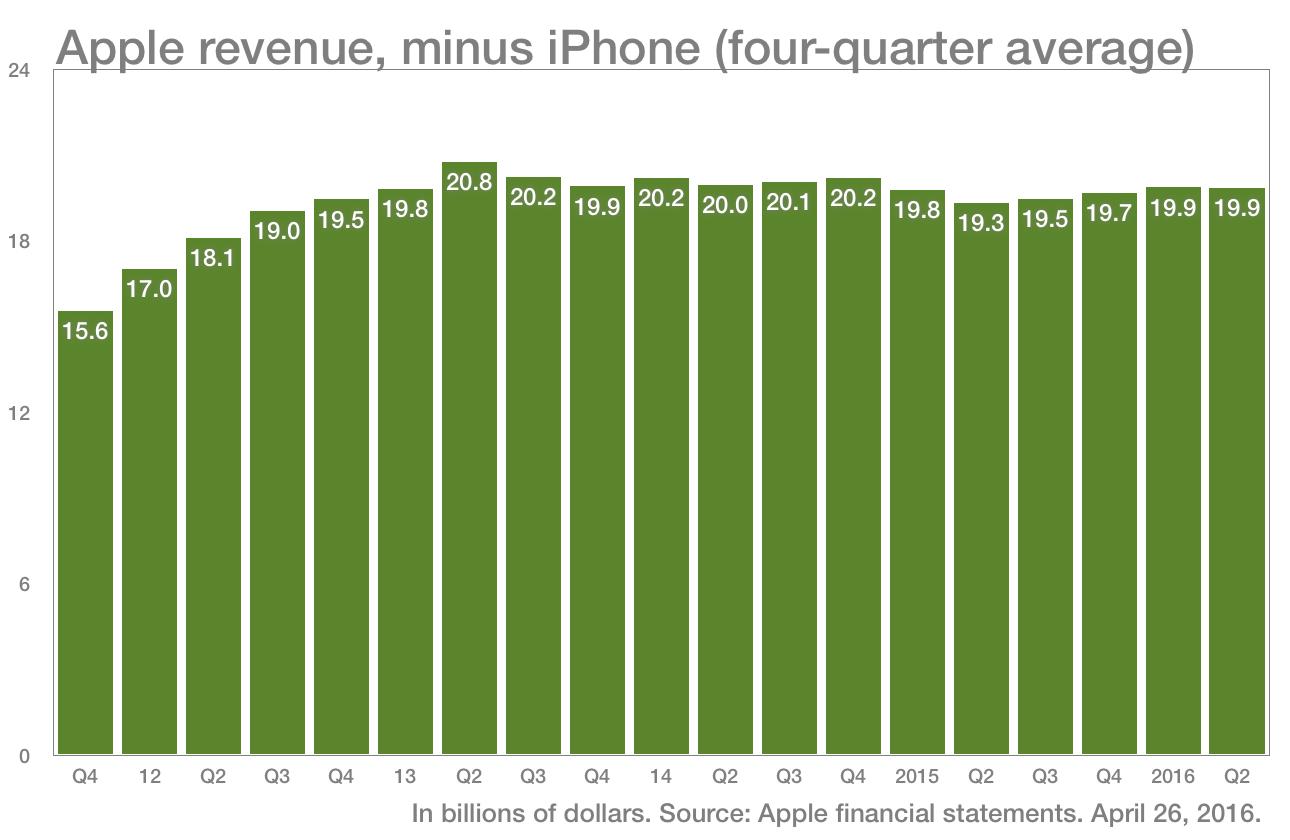
Or to put it another way, Apple's non-iPhone business is generating about $80 billion in revenue every year — roughly the same as Microsoft. The Mac generates $24 billion per year, and the iPad (at the moment) generates around $20 billion per year. Put together, that's roughly the revenue of Hewlett-Packard. Starbucks just reported its most recent quarterly revenue total: $5 billion, or roughly what the Mac generated in revenue last quarter. Facebook's blow-out quarter? $5.4 billion in revenue.
Master your iPhone in minutes
iMore offers spot-on advice and guidance from our team of experts, with decades of Apple device experience to lean on. Learn more with iMore!
Now, it's surely true that to some degree, the iPhone is intertwined with the rest of Apple's business. Would the iPad even exist were it not for the iPhone? Surely iOS development wouldn't have proceeded at such a great pace were the iPhone's runaway success not acting as a spur. Services revenue is also, in large part, coming from iPhone-related services, and there would be no Apple Watch sales without an iPhone to connect it to.
But I'm not really arguing how Apple would do if the iPhone didn't exist. Instead, it's worth looking past the glare of the iPhone to see Apple's other healthy businesses that are too often missed as we admire the company's dazzling success. (Or freak out over a quarterly sales drop, as many did this week.)
Mac and the iPad
It's hard to truly gauge how profitable the Mac and iPad product lines are, but Apple tends to run pretty good margins, so I'd imagine that both are quite profitable businesses. And while the iPad seems to still be trying to find its level after an initial burst of enthusiasm, the Mac just keeps on selling:
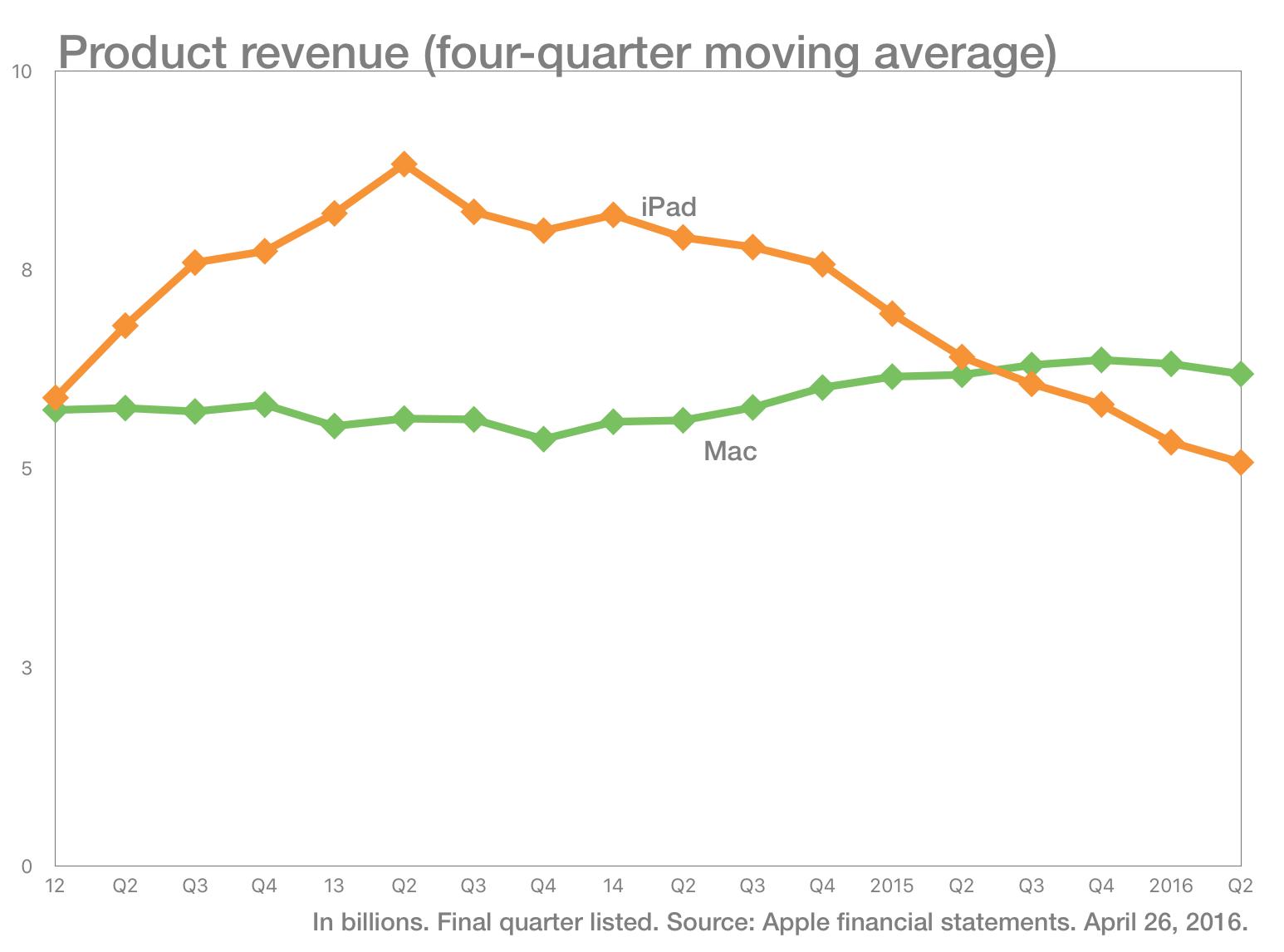
That steady line for the Mac is all the more impressive when you realize that these days, the market for personal computers is pretty steadily going down. So as Mac sales maintain, Apple gains market share.
It's also worth remembering that historically, the Mac is at an all-time high. In fiscal 2015, Apple sold 20.6 million Macs, and it's on pace to do the same this year. But it didn't used to be this way: In 2010, Apple only sold 13.7 million Macs; in 2005, that number was just 3.3 million. Apple has broken its record for the most Macs sold in a fiscal year 10 of the last 11 years.
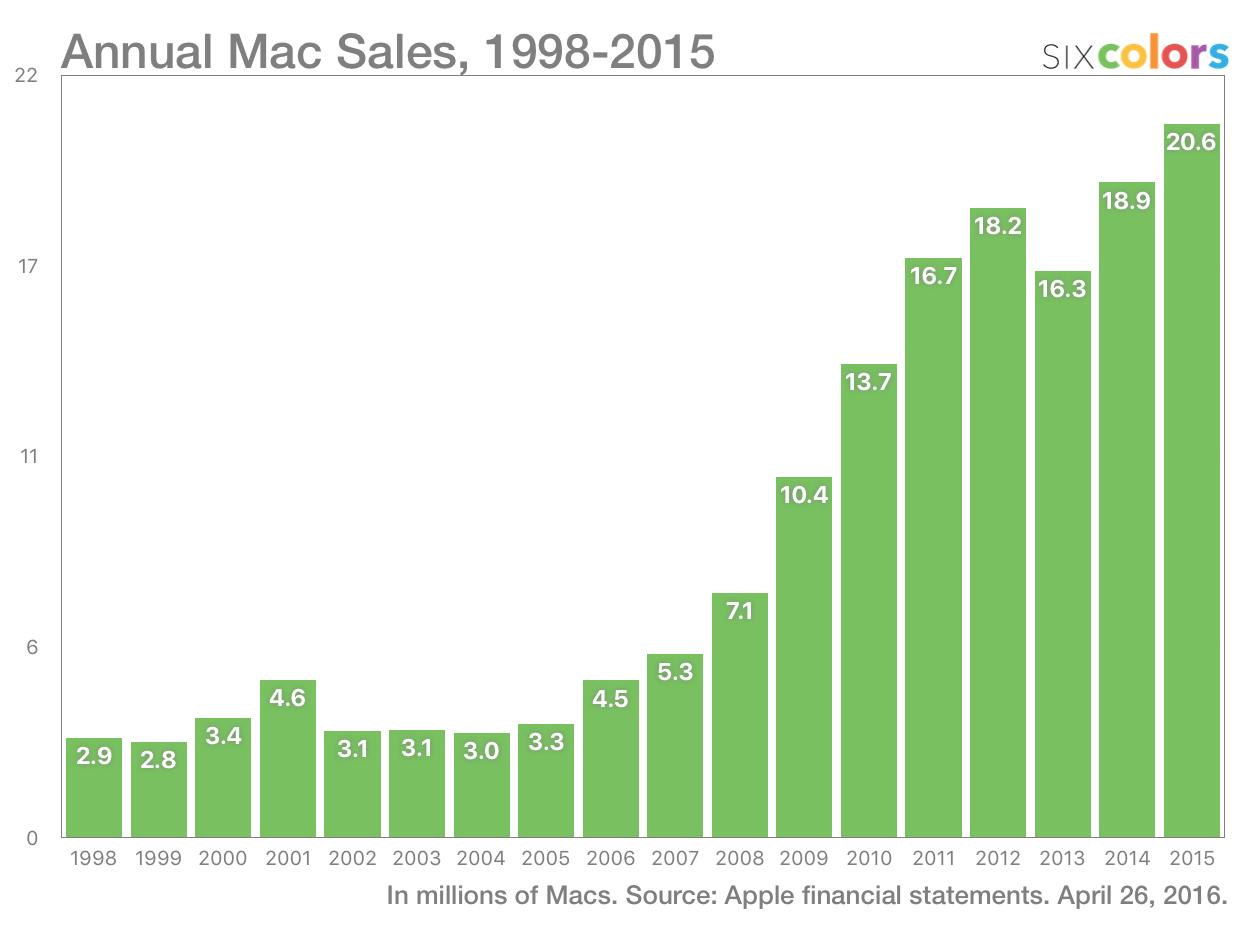
This brings us to the mystery of the iPad. The fact is, if iPad Inc. was a standalone company, its CEO would've been fired quite a while ago. But with its sales drop beginning to tail off and the expectation that the iPad will have its best year-over-year revenue comparison in more than two years this next quarter, perhaps the iPad has hit bottom. Or perhaps, at the very least, it can finally see the bottom it's about to hit.
Call me an optimist, but I can't help but thinking the iPad really will settle down in to a good, Mac-like business. Perhaps it will be a little bit smaller than the Mac for now, but over time that might change if more people decide they'd rather have a tablet than a laptop. Regardless, Apple's probably got the best tablet business in the world, and if it generates $15 billion per year in revenue, that's still pretty great.
Sometimes I worry that iPhone gets the lion's share of Apple's attention — and by the numbers, it really should. But I'm encouraged by the fact that Apple still commits to innovation in Mac hardware (albeit at a slower pace than some Mac fans might like), and has taken steps the last year to really upgrade the iPad, both hardware and software. But when you look at the size of the Mac and the iPad, that decision doesn't seem like charity, but like good business sense. And as someone who relies on the Mac and iPad, I'm grateful that Apple gives due attention to those product lines.
Garfield is the star of Garfield
Enough imagining. Will Apple ever be a company without the iPhone?
I can't see it happening. The smartphone strikes me as being a once-in-a-lifetime kind of product. When was the last time a piece of technology became so ubiquitous, so fast, around the world? (Radio, maybe?) And when will it happen again? It seems to me that the entire computer industry has been leading to this, the arrival of Internet-connected supercomputers in everyone's pockets.
Perhaps one day there will be some kind of direct-brain interface that will make smartphones seem so early 21st century. But for the foreseeable future, it's hard to imagine that Apple won't continue to be identified with its most successful product ever, the iPhone. And that's fine — so long as we don't forget the other products that are too often lost in its shadow.
Former lead editor at Macworld for more than a decade, wrote about Apple and other tech companies for two decades. Now I write at Six Colors and run The Incomparable podcast network, which is all about geeky pop culture, and host the Upgrade and Clockwise tech podcasts.

